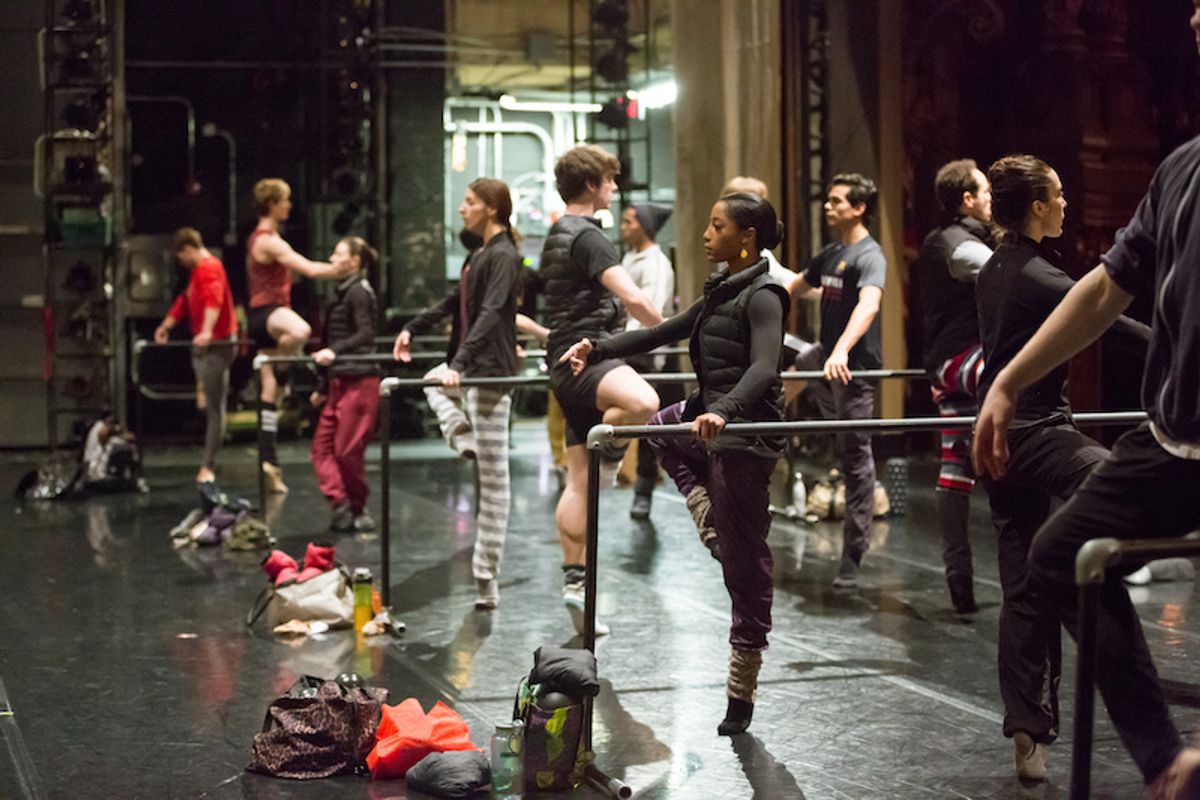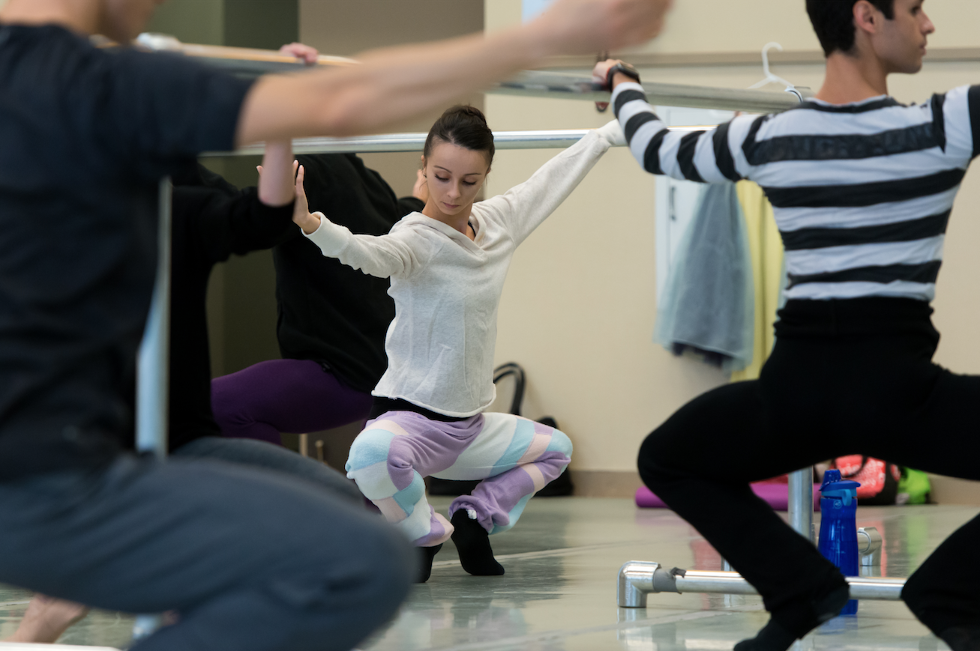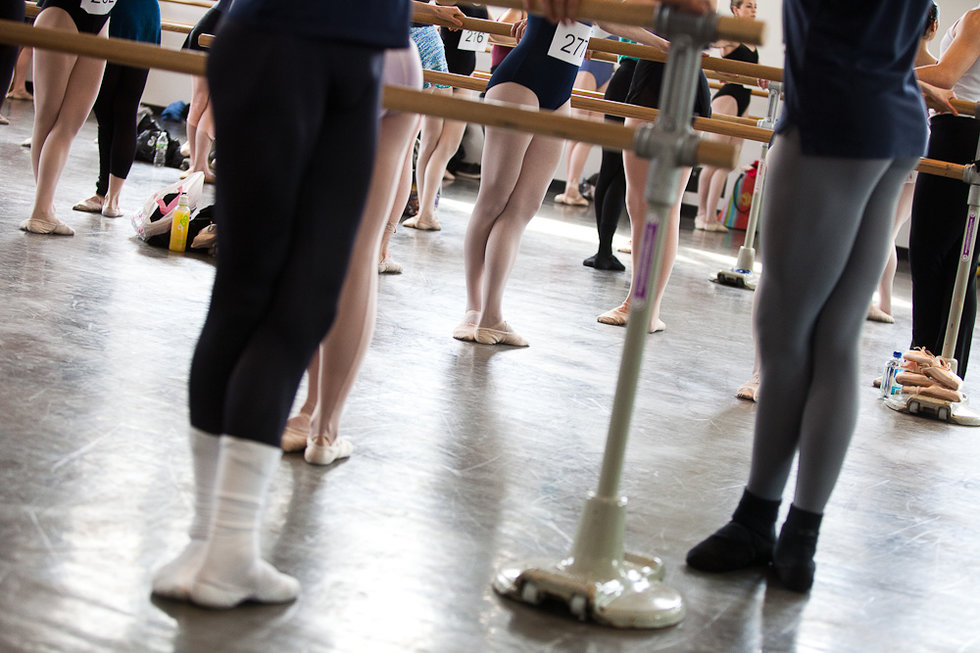
Before she became the 20th century’s most revered ballet pedagogue, Agrippina Vaganova was a frustrated ballerina. “I was not progressing and that was a terrible thing to realize,” she wrote in a rough draft of her memoirs.
She retired from the Imperial Ballet stage in 1916, and for the next 30-plus years, devoted herself to creating a “science of ballet.” Her new, dynamic teaching method produced stars like Rudolf Nureyev, Alla Osipenko, and Galina Ulanova and later Natalia Makarova and Mikhail Baryshnikov. And her approach continues to influence how we think about ballet training to this day.
But is the ballet class due for an update? Demands and aesthetics have changed. So should the way dancers train change too?
Since ballet began more than 400 years ago, there has always been the question of how to train dancers for the job’s unique mix of physical, theatrical and musical skills. Each generation has learned from the one before it, adding bits here and cutting bits there.
 Tulsa Ballet company members practice morning pliés. Photo by Francisco Estevez, courtesy Tulsa Ballet
Tulsa Ballet company members practice morning pliés. Photo by Francisco Estevez, courtesy Tulsa Ballet
Eventually, around the beginning of the 19th century, ballet class took the form and structure of what professional ballet dancers now do every day, beginning at the barre with pliés and ending in the center with allégro. Like today, the steps they practiced were ballet steps; they trained as a large ensemble divvied up into lines and groups according to the exercise; they faced a mirror and followed the teacher’s instructions.
Yet today’s ballet dancers need to be much more versatile. Almost all midsize to large ballet companies now boast a repertoire that includes works by choreographers like William Forsythe and Ohad Naharin alongside neoclassicists like Jerome Robbins and George Balanchine.
To address those demands, BalletMet artistic director Edwaard Liang, for one, says he encourages his ballet masters to give class combinations that tie in with the choreography. For example, if they are performing Giselle they might do longer adagios for stamina and hold arabesque pliés while the men are given more petit allégro. For a contemporary ballet program they incorporate more transitional material into the combinations, which mirrors the complicated transitions in the choreography.
But, Liang admits, with a work like Naharin’s Minus 16, there is no natural tie-in. (Instead, his dancers took Gaga three times a week after morning ballet class before their Minus 16 run.)
 BalletMet’s Edwaard Liang teaching company class. Photo by Jennifer Zmuda.
BalletMet’s Edwaard Liang teaching company class. Photo by Jennifer Zmuda.
Vaganova faced a similar situation in the years following the Russian Revolution. Soviet choreographers searching for a new dance style to match the new social order threw some very unclassical acrobatic moves at the dancers—steps like splits and high leg extensions which until that point were considered inappropriate. Vaganova adjusted her class to prepare students for these “new steps.” In her view, these movements would be meaningless if they were not properly trained. “We will achieve nothing new by bringing them to the stage without the corresponding treatment,” she wrote (as translated by Catherine Pawlick in Vaganova Today: The Preservation of Pedagogical Tradition). Where choreography goes, preparation for it ought to follow, or, at the very least, adapt.
Today’s dancers are not only asked to perform a greater variety of technique, but often at a higher intensity, which presents its own challenges. Emma Redding, head of dance science at Trinity Laban Conservatoire of Music and Dance, points out in Dancers: Fit Bodies? that ballet classes focus on skill acquisition rather than general physiological development, such as strength and stamina. That means that most dancers need to supplement their daily class with all manner of cross-training—Pilates, yoga, Gyrotonic, spinning, swimming—to gain the aerobic fitness and power they need for performance, and to avoid injury.
Joffrey Ballet dancer Derrick Agnoletti, for example, does CrossFit three mornings a week and swimming and boot camp on the other two. “Class doesn’t train us for stamina, but a lot of our work is stamina-based,” he says. At 35, Agnoletti may be one of the oldest dancers in the company, but his cross-training regimen has made him one of the fittest. “When most of the dancers are out of breath I feel fine,” he says.
 Most dancers feel pressure to perform significant amounts of cross-training to build the strength ballet class doesn’t. Photo by Quinn Wharton.
Most dancers feel pressure to perform significant amounts of cross-training to build the strength ballet class doesn’t. Photo by Quinn Wharton.
Could class be redesigned to improve fitness? Yes, say Brazilian researchers Josianne Rodrigues-Krause, Mauricio Krause and Álvaro Reischak-Oliveira. In Cardiorespiratory Considerations in Dance: From Classes to Performances, they propose introducing “ballet sets” after the center phase of technique class, such as five-minute routines of three sets of 20-second high-intensity exercise (allégro) interspersed with two minutes of active recovery (such as adagio). This interval training would challenge dancers’ aerobic fitness while using the specific muscles and coordination required in ballet. They suggest teachers get the support of fitness specialists to integrate physical training principles into class to better meet the requirements of today’s choreography.
Their proposals call into question the overall efficiency of the ballet class, and whether dancers’ time and energy can be better managed. For example, is the barre section too long and unnecessarily repetitive?
A number of studies show that barre is not as effective in training dancers’ balance as is commonly assumed. Curious about the transfer of training from barre to center, Virginia Wilmerding, a research professor at University of New Mexico, carried out an electromyographical comparison of a développé devant at barre and at center and discovered—drum roll—that the standing leg works 50 to 60 percent less while using the barre.
 The standing leg isn’t fully activated at barre. Photo by Matthew Murphy.
The standing leg isn’t fully activated at barre. Photo by Matthew Murphy.
“You may be training a myriad of other things, but you are not training your standing leg,” she says. “So then you go into the center and look at all the tendus you have to do because you wasted 45 minutes at barre not training the supporting foot.” However, she recognizes that barre is more than this. “I feel weird saying barre doesn’t do this or that because when I was dancing, I loved barre! It gets you into a kind of mindfulness.”
Vaganova died in 1951 before dance science became a serious subject of research. But she already had a scientist’s approach—she believed that ballet could be taught in an analytical way to achieve consistent results. She was not impressed by coincidental success achieved unsystematically. Vaganova would likely be delighted with all the new means of analyzing movement, like videography and motion-capture technology—more tools in the pedagogue’s kit—and update her approach accordingly.
The classical ballet class has served the art form tremendously well for a couple hundred years. “Considering how old the traditions are, it is extraordinary what they got right,” says Wilmerding. “The fact that you start slowly and move more quickly as time passes. The fact that you start with a wide base of support and slowly move to a narrow base of support.”
Most dance professionals still believe firmly in the traditional ballet class as daily practice. “It is beautifully codified and sets one up for doing almost anything,” says Jodie Gates, who heads the Glorya Kaufman School of Dance at the University of Southern California, “but I think we can approach it with contemporary thinking.” Rather than challenging the structure of class, her program challenges its culture, taking ballet off its elitist pedestal by giving it equal weight as other techniques.
 Ballet class at USC. Photo by Carolyn DiLoreto
Ballet class at USC. Photo by Carolyn DiLoreto
Liang, on the other hand, is not sure we have ever thought outside the box enough. “We are steeped in tradition,” he says, “and the scariest word to all of us is ‘change.’ ” Many ballet dancers have an almost superstitious need to practice the same steps in the same order every day.
Yet in her lifetime, Vaganova’s own approach changed. “Pupils who have not seen me for a long time find an improvement and progress in my teaching,” she wrote in one of her last articles. “What is the cause of this? Diligent attention to new types of productions. Look at life all around; everything is growing, everything is moving forward. Therefore, I recommend… Keeping in touch with life and with art.”
This story has been updated to credit quotes from Agrippina Vaganova to Catherine Pawlick’s Vaganova Today: The Preservation of Pedagogical Tradition and Agrippina Vaganova’s Basic Principals of Classical Ballet. We regret the ommission.



